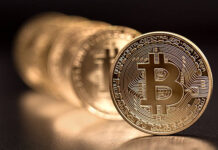Markets
Disappointing EMU July PMI’s set the tone for global trading yesterday morning. The composite measure dropped further into contraction territory (48.9 from 49.9) as activity in the manufacturing sector slumped further (42.7 from 43.4). Growth in the services sector remains positive (51.1 from 52.0) but is eroding too. Orders are declining both in manufacturing and services, causing companies to work through still existing backlogs. Employment in manufacturing is being reduced while growth in the services sector slows markedly. The disinflation process in the manufacturing sector continues. Higher wages still support higher costs and output prices in the services sector, but also here the pace of growth slows. The later remains an important factor in the ECB deliberation process on monetary policy. Even so, the negative EMU growth outlook still pushed EMU yields substantially lower. German yields initially dropped up to 7 bps +, but the bond rally eased during the US trading session. At the end of the day German yields dropped between 4.8 bps (2 & 5-y yield) and 1.2 bps (30-y). Momentum in US Treasuries gradually decoupled from what happened in Europe. The decline in US PMI’s was much more modest (composite 52.0 from 53.2) with a positive surprise from the manufacturing sector (49.0 from 46.3). Investors apparently also were a bit cautious to aggressively bid for the US 2-y auction going into Wednesday’s Fed decision. US yields finally gained between 8.2 bps (2-y) and 2.5 bps (30-y). US equities (S&P 500 +0.4%) outperformed Europe (EuroStoxx 50 -0.19%). Divergence in the outlook for activity and in yields propelled the dollar, especially against the euro. EUR/USD decisively dropped below the 1.1095 support to close at 1.1064. The UK PMI’s basically showed a similar picture compared to Europe (composite from 52.8 to 50.7). Still sterling slightly outperformed the single currency. EUR/GBP closed at 0.8627.
Today, Asian markets (except Japan) mostly trade in positive territory as investors see growing sings of Chinese authorities preparing additional measure to support activity, in particular the property sector. The yuan strengthens substantially (USD/CNY 7.149). The Aussie dollar profits too (AUD/USD 0.677). US yields are taking a breather after yesterday’s uptick an so does the dollar (DXY 101.3, EUR/USD 1.1076). Later today, The German IFO survey is expected to confirm yesterday’s poor PMI reading. Going into the ECB meeting, we also keep a close eye at the ECB lending survey. In the US, consumer confidence (Conference Board) is expected to improve from 109.7 to 112. Recent US consumer related data showed quite resilient. Investors probably will remain cautious to place big bets going into the Fed and the ECB meeting. Even so, the downside in US yields probably is better protect compared to Europe. In this context, there is also little reason to expect EUR/USD to easily regain the 1.1095 previous top ahead of the Fed/ECB meetings. The EUR/USD technical picture shows some cracks.
News and views
Germany is readying a €20bn subsidy package to support its semiconductor manufacturing industry. The move comes as the country seeks less international reliance for supplies of critical components, a strategy of which the flaws were laid bare after Covid and geopolitical tensions wrecked overseas supply chains. It can also be seen as a response to the US Inflation Reduction Act to attract investment. The money will be distributed to companies by 2027 and will be drawn from the Climate and Transformation Fund. The latter is an off-budget pot, originally designed for financing Germany’s decarbonization. But its scope is being increasingly expanded as the government vows to return to fiscal constraint after years of Covid and energy crisis spending.
International wheat prices over the course of a couple of days rose to the highest level in five months. The surge started when Russia withdrew from the UN-brokered deal to allow for Ukrainian grain export via the Black Sea last week. Adding to the upward pressures is yesterday’s Russian drone attack on a grain storage silo in Ukraine, resulting in a 2.6% wheat price increase, before paring gains to about 1%. After hitting the lowest level since December 2020, wheat currently trades about 33% higher at around $768/bu this morning. It comes amid other sharp price rises in the likes of rice (highest in more than two years) as crops are being threatened by the El Niño weather pattern. It is also bad news for central banks. Global food inflation was finally easing but that disinflation process may be thwarted by the current developments.












